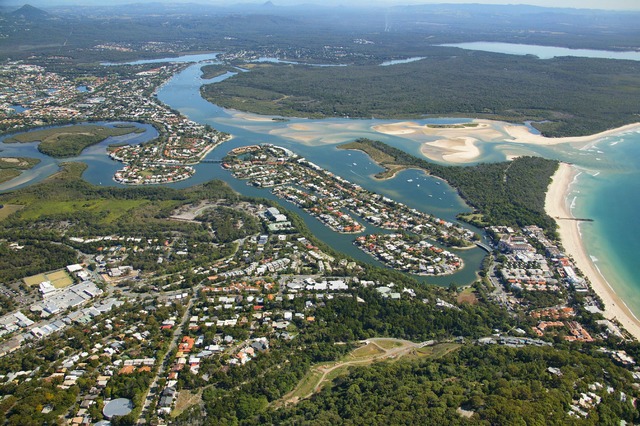Data released from Anglicare Southern Queensland’s (ASQ) 2025 Rental Affordability Snapshot this week confirms the stark reality of the region’s housing crisis, with nearly zero affordable and appropriate rental properties available on the Sunshine Coast for people on income support.
Since 2010, Anglicare Australia and a network of state and regional partners have conducted the annual Rental Affordability Snapshot. The 2025 data was captured by ASQ on all rental properties available across the region over the weekend of 16-17 March.
Of the 732 rental properties available in the Sunshine Coast, only 2 (0.3%) were affordable and appropriate for households on income support, only 7 (0.1%) were affordable and appropriate for those on minimum wage, and across all household categories median rent on the Sunshine Coast for a couple on minimum wage with two children doesn’t fall below 44 per cent of household income.
The study found a single adult on youth allowance on the Sunshine Coast would need to pay 134 per cent of their income in rent, and both a single parent on minimum wage and a couple on an age pension would spend 55 per cent of their income on rent.
ASQ reports on rental affordability in a region encompassing the lower third of Queensland, stretching from the Queensland–New South Wales border, north to Bundaberg, and west to the Northern Territory border.
This year’s report shows regions across Southern Queensland in crisis with rents on par with Melbourne and Sydney.
Across the 8,646 rental listings surveyed, only 0.5 per cent were affordable and appropriate for those on income support. For those on minimum wage, there wasn’t much choice either, with the number of affordable rental properties sitting at 7.7 per cent.
Anglicare Southern Queensland CEO Sue Cooke said it was disappointing to see no real improvement – in fact, deterioration – in the overall rental affordability data in the past 12 months.
“The lack of safe, affordable and appropriate housing is not just a housing issue – it’s a community issue and it’s one that becomes a greater problem each year,” Ms Cooke said.
“We’re seeing more of our most exposed citizens – our youth, young families and single mothers – being the ones hardest hit by the lack of affordable and accessible housing.
“The human cost of rental stress and unaffordable housing is huge, and it’s a key driver of homelessness. Our report shows those unable to secure housing, including young people, can be forced into couch surfing, unsafe accommodation or remaining in situations of family violence.
The report listed the number of homeless people on the Sunshine Coast at almost 1400 with 15 per cent of those youth.
“Anglicare Southern Queensland is one of many at the frontline and each day we see the impact of the housing crisis. We are focused on supporting the community with practical assistance and solutions,” Ms Cooke said.
“We provide a range of services and housing but when you look at the data … this is a drop in the ocean for what’s needed.”
The report recommends addressing the situation in a holistic manner across the whole housing spectrum, from homelessness and social housing through to affordable rental and home ownership; and to consider touch points with broader social issues such as economic hardship, employment, and education and involving all levels of government.
On a federal government level and with an election looming ASQ says housing supply remains a critical issue but policies designed to assist first time homeowners that stimulate demand were likely to add more pressure to markets and prices, and subsequently on renters, and both major parties were overlooking those who need the most help.
Recently released SGS Economics and Planning/National Shelter data shows the disparity between median rents and income growth with rents having risen at least 3.5 times faster than income in regional Queensland, and three times faster in Brisbane.
The Australian Council of Social Services points out, “income support should be there to support people through the tough times, not keep them in a struggle for survival”.
“Routine indexation increases are clearly insufficient to cover even basics such as housing, food, bills, and transport, particularly in a cost-of-living crisis”.
With the Australian Council of Social Service (ACOSS), ASQ supports the call for all income support payments to be raised to at least the pension rate ($82 a day) so people can afford life’s essentials and live with dignity.
On a state government level ASQ noted both the former ALP and new LNP governments had committed to housing but the Snapshot showed more needed to be done.
The report made reference to the former ALP government’s Homes for Queenslanders plan in its Queensland Budget 2025-2026 paper, saying the Queensland Council of Social Service (QCOSS) had noted it was “a credible broad-reaching housing plan that included nation-leading social housing targets that, if implemented long-term, [could] end the housing crisis in Queensland,” as well as the LNP’s commitment of one million homes over the next 20 years, including 53,500 new social housing dwellings by 2044.
ASQ said it looked forward hearing outcomes of the recently established Homelessness Ministerial Advisory Council, which will comprise leaders from across government, councils, and the housing, health, and community sectors, to “help better target crisis response[s] and drive sustainable, long-term solutions to homelessness”.
On a local government level ASQ accused recent policy responses that criminalise public camping by people experiencing homelessness, of compounding disadvantage and putting pressure on other social services, agreeing with QShelter policy and strategic engagement manager Jackson Hills that the tension between public use of parks and similar spaces, and the need for those experiencing homelessness to find a place to sleep safely, is a difficult issue and challenging to resolve,







